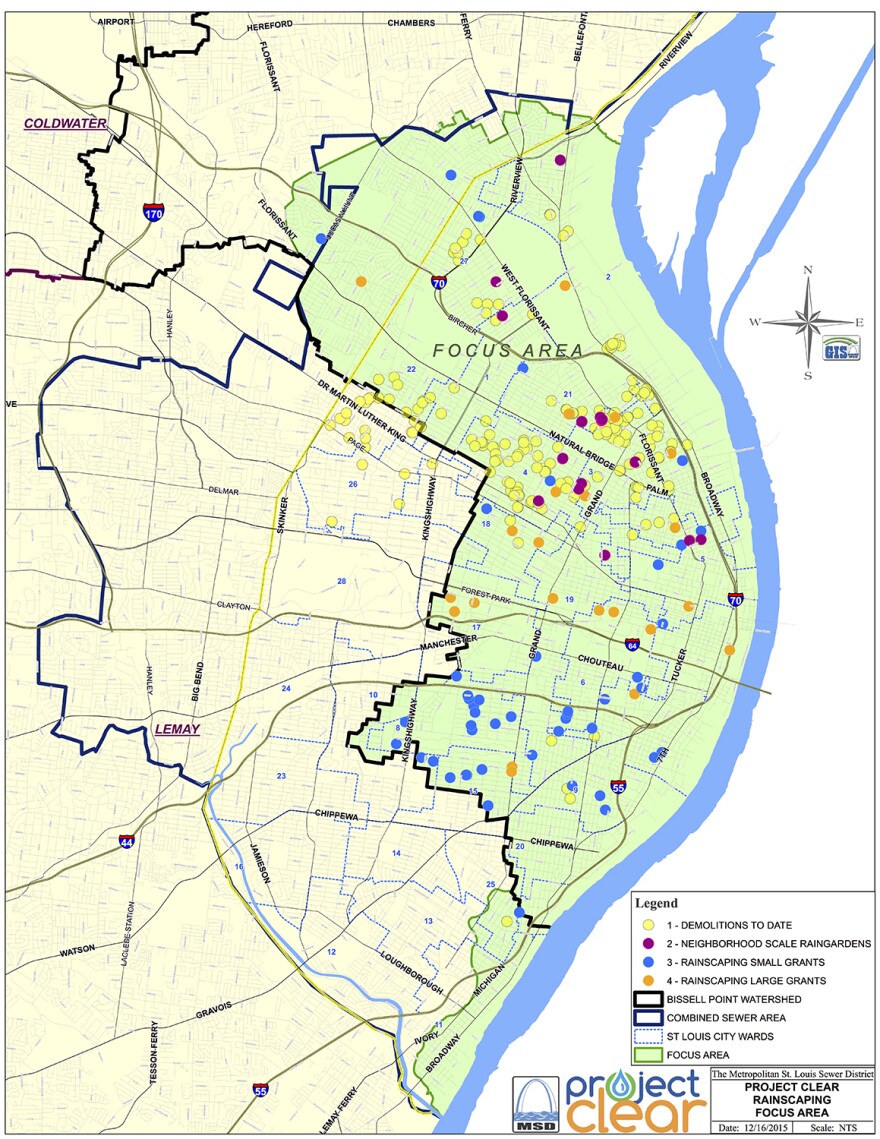The Metropolitan St. Louis Sewer District is spending billions of dollars to keep sewage out of area waterways as part of a court-ordered agreement. But MSD’s plan involves something you might not expect: demolishing vacant buildings.

Right now, big storms can overwhelm the city’s combined stormwater and sewer system, causing raw sewage to overflow into rivers and streams.
If a surface is paved over — or has a building on it — rain will run off it into the sewers. But take the building away and the rainwater can seep into the ground instead. "We were amazed to find that the building demolitions actually resulted in a large amount of water capture for relatively very few dollars of investment," MSD Executive Director Brian Hoelscher said.
Hoelscher said MSD will spend up to $13.5 million to demolish vacant buildings in St. Louis over the next two decades. MSD will also provide small grants to homeowners to build rain gardens and planter boxes, as well as bigger ones to help fund projects like the rain-friendly landscaping in the Cortex Innovation District, or the Urban Harvest Food Room Farm. In all, MSD will devote $100 million to "green" infrastructure projects designed to reduce stormwater runoff.

The building demolition part of the project will have additional benefits, according to St. Louis Mayor Francis Slay. The city currently spends about $1 million a year to tear down about 200 condemned buildings. “They are eyesores," Slay said. "They affect property values. They detract from the fabric of our communities. And they attract crime.”
Slay said the partnership with MSD will more than double the city's budget for demolishing vacant buildings, with the goal of taking down about 1,600 structures over the next two decades.
The green infrastructure investments are one small part of a 23-year, $4.7 billion St. Louis-area sewer upgrade required under a 2012 court-ordered agreement between MSD, the U.S. Environmental Protection Agency, and the Missouri Coalition for the Environment.
Residential rate payers will end up covering the costs on their monthly sewer bills.
Follow Véronique LaCapra on Twitter: @KWMUScience




